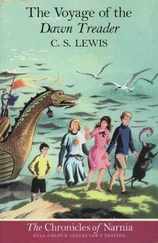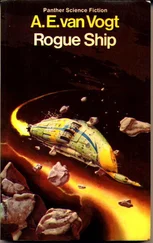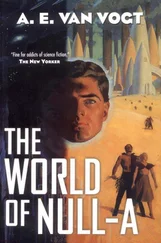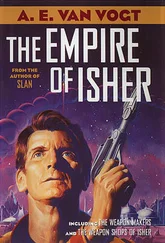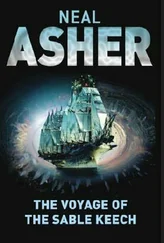During the single day and night period that followed, the steaming jungle world was enveloped. The Anabis overflowed every ocean, every continent, and spread up to where the eternal clouds gave way to unadulterated sunlight. Later, in the days of its intelligence, it was able to analyse what happened then. Whenever it gained in bulk, it absorbed certain gases from the atmosphere around it. To bring this about, two agents were needed, not just one. There was the food it had to search for. And there was the natural action of ultraviolet radiation from the sun. In the swamp, far below the upper reaches of that water-laden atmosphere, only a minute quantity of the necessary short waves had come through. The results were correspondingly tiny, localized, and potentially only planetary in scope.
As it emerged from the mist, it was increasingly exposed to ultra-violet light. The dynamic expansion that began then did not slow for aeons. On the second day, it reached the nearest planet. In a measurable time, it spread to the limits of the galaxy, and reached out automatically for the shining stuff of other star systems. But there it met defeat in distances that seemed to yield nothing to its groping, tenuous matter.
It took in knowledge as it took in food. And in the early days it believed the thoughts were its own. Gradually, it grew aware that the electrical nerve energy it absorbed at each death scene brought with it the mind-stuff of both a victorious and a dying beast. For a time, that was its thought level. It learned the animal cunning of many a carnivorous hunter, and the evasive skill of the hunted. But, here and there on different planets, it made contact with an entirely different degree of intelligence: beings who could think, civilization, science.
It discovered from them, among many other things, that by concentrating its elements it could make holes in space, go through, and come out at a distant point. It learned to transport matter in this fashion. It began to junglize planets as a matter of course because primeval worlds provided the most life force. It transported great slices of other jungle worlds through hyperspace. It projected cold planets nearer their suns.
It wasn’t enough.
The days of its power seemed but a moment. Wherever it fed, it grew vaster. Despite its enormous intelligence, it could never strike a balance anywhere. With horrendous fear, it foresaw that it was doomed within a measurable time.
The coming of the ship brought hope. By stretching dangerously thin in one direction, it would follow the ship to where-ever it had come from. Thus would begin a desperate struggle to remain alive by jumping from galaxy to galaxy, spreading ever farther into the immense night. Throughout those years, its hope must be that it would be able to junglize planets, and that space had no end….
To the men, darkness made no difference. The Space Beagle crouched on a vast plain of jagged metal. Every porthole shed light. Great searchlights poured added illumination on rows of engines that were tearing enormous holes into the all-iron world. At the beginning, the iron was fed into a single manufacturing machine, which turned out unstable iron torpedoes at the rate of one every minute, and immediately launched them into space.
By dawn of the next morning, the manufacturing machine itself began to be manufactured, and additional robot feeders poured raw iron into each new unit. Soon, a hundred, then thousands of manufacturing machines were turning out those slim, dark torpedoes. In ever greater numbers they soared into the surrounding night, scattering their radioactive substance to every side. For thirty thousand years those torpedoes would shed their destroying atoms. They were designed to remain within the gravitational field of their galaxy, but never to fall on a planet or into a sun.
As the slow, red dawn of the second morning brightened the horizon, engineer Pennons reported on the “General Call.”
“We’re now turning out nine thousand a second; and I think we can safely leave the machines to finish the job. I’ve put a partial screen around the planet to prevent interference. Another hundred iron worlds properly located, and our bulky friend will begin to have a hollow feeling in his vital parts. It’s time we were on our way.”
The time came, months later, when they decided that their destination would be Nebula NGC-50,437. Astronomer Lester explained the meaning of the selection.
“That particular galaxy,” he said quietly, “is nine hundred million light-years away. If this gas intelligence follows us, he’ll lose even his stupendous self in a night that almost literally has no end.”
He sat down, and Grosvenor rose to speak.
“I’m sure,” he began, “we all understand that we are not going to this remote star system. It would take us centuries, perhaps thousands of years, to reach it. All we want is to get this inimical life form out where he will starve. We’ll be able to tell if he’s following us by the murmurings of his thoughts. And we’ll know he’s dead when the murmurings stop.”
That was exactly what happened.
Time passed. Grosvenor entered the auditorium room of his department, and saw that his class had again enlarged. Every seat was occupied, and several chairs had been brought in from adjoining rooms. He began his lecture of the evening.
“The problems which Nexialism confronts are whole problems. Man has divided life and matter into separate compartments of knowledge and being. And, even though he sometimes uses words which indicate his awareness of the wholeness of nature, he continues to behave as if the one, changing universe had many separately functioning parts. The techniques we will discuss tonight….”
He paused. He had been looking out over his audience, and his gaze had suddenly fastened on a familiar figure well to the rear of the room. After a moment’s hesitation, Grosvenor went on.
“…will show how this disparity between reality and man’s behaviour can be overcome.”
He went on to describe the techniques, and in the back of the room Gregory Kent took his first notes on the science of Nexialism.
And, carrying its little bit of human civilization, the expeditionary ship Space Beagle sped at an ever-increasing velocity through a night that had no end.
And no beginning.
Slan
The Mind Cage
Away and Beyond
Destination: Universe!
Moonbeast
The Book of Ptath
The War Against the Rull
Rogue Ship
Granada Publishing Limited
Published in 1959 by Panther Books Ltd
Frogmore, St Albans, Herts. AL2 2NF
Reprinted 1963, 1968, 1970, 1973, 1975, 1977.
First published in Great Britain
by Grayson and Grayson Ltd 1951
Made and printed in Great Britain
by Hunt Barnard Printing Ltd
Aylesbury, Bucks.
Set in Monotype Plantin.
This book is sold subject to the condition that it shall not, by way of trade or otherwise, be lent, re-sold, hired out or otherwise circulated without the publisher’s prior consent in any form of binding or cover other than that in which it is published and without a similar condition including this condition being imposed on the subsequent purchaser.
This book is published at a net price and is supplied subject to the Publishers Association Standard Conditions of Sale registered under the Restrictive Trade Practices Act, 1956.
Scanning / Proofing data:
DT copy: Panther Science Fiction edition, 7th printing 1977
Additional reference: UC scan of US-English edition.
The Panther edition is an “anglicized” version of the original American book. The UK-English spelling as in the book has been preserved, but some spelling errors — where they were suspected to be typing errors — have been corrected, after double-checking against at least two of:
Читать дальше

